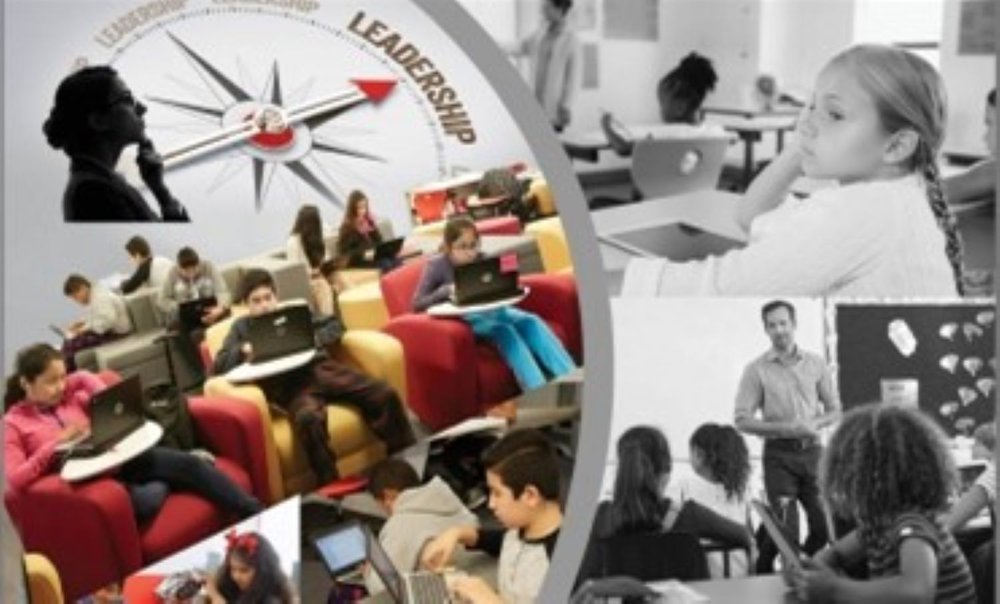The purpose of a learning model shift is to allow schools and teachers to retain relevancy, perhaps even supremacy, over fully consumer models available today, which by their very nature will be less teacher-humanized and lacking most of the benefits that an experienced teacher can bring.
There are eight primary models currently in the K12 market for organizing learning with Hybrid Logistics. Many schools and districts are currently trying models and the mixing of models. The discussion about how your model drives true equity and best leverages your teachers is predicted to be a very hot topic for many years to come since the start of the Pandemic changed so much of the tech landscape in schools.
Here are the eight current models:
1. Digital Traditional/Alt Schedule
Buildings and spaces anchor overall schedule offerings, teachers are assigned to classrooms. Students route through a grade/class “manufacturing model” with lessons sometimes modified for individual students within same whole group pace. Tech is used in whole group style (interactive whiteboards and computers). Schools offer some fully online classes by in-house teachers, rarely outside services, and mostly as a separate group that rarely interacts with on-campus students. Is “new” with tech used as teacher tools and after the pandemic has more restructured schedules like A/B weeks for specified groups or grades, A/B days, one or more days fully online, and changed hours blocks.
2. Blended/Flipped Traditional
Same as traditional schooling schedules except with take-home student devices and teachers “blending” tech in classrooms. Usually defines “flipped” as asynchronous learning done during homework hours with in-class time now spent on hands-on and discussion activities including project-based learning. May use outside services for teaching fully online classes or inhouse teachers.
3. Competency-Based Contemporary
Operates with more of an individually paced course structure than class whole-group teacher-led. Found in mostly smaller schools with fewer teachers and only one or a handful of classrooms. Students are broken into wider age groups not necessarily grade related. Teacher teams oversee these small or large cohorts by spot-checking preplanned full courses that are mostly asynchronous work so that any age student at any point in their learning can be serviced by the school. Teachers convene sub-groups infrequently for specific purposes such as hands-on projects that could relate to multiple subjects and different ages. Lecture-style is rare. Tech use is similar to blended/flipped traditional. The nature of some courses may be grade or satisfactory-mark-based rather than require a mastery. This schooling form has scaling issues in large districts.
4. Fully Online Traditional
A substantially similar model to traditional schooling except students do not convene regularly in physical spaces and receive learning through a system of courses online. Typically, a fully online school may have live teachers and/ or use chatbots and phone service desks to help students. May also be an attached school-within-a-school offering for students who do not come to the campus. Is traditional in the sense that courses are offered within a routine daily schedule which the student should follow to complete. In addition, lecture-style classes may be part of the schedule within courses.
5. Fully Online Contemporary
Also known as the “consumer” model where students can participate in just one course or many. Grades and set paths to graduation may or may not be a part of the construct. Typically, a fully online school, a single-subject purchase or subscription set of subjects that may or may not have live teachers and will usually use more chatbots and phone service desks to help students in 15 a non-traditional, flexible schedule where students progress at their own pace. Lectures are mostly prerecorded if used at all. Homeschoolers may use multiple consumer subscriptions to online contemporary school courses, courseware, and discrete digital learning resources to create a custom path.
6. Hybrid Simultaneous Traditional
Since the pandemic, this model has emerged as the same as traditional schooling schedules except with teachers simultaneously teaching in-class and virtual students. They maintain the same overall schedule with whole group pacing and may use outside services for teaching fully online classes or in-house teachers. Is usually also using a lot of classroom tech.
7. Hybrid Logistics Contemporary
This is an emerging model and the physical structure changes dramatically to compete with contemporary online models by truly individualizing learning without compromising quality live teaching and on-campus social interaction.
Hybrid logistics rely heavily on tech to auto-cohort students into occasional live teaching intersections (lectures/activities) based on pace. Same-age students may be at widely divergent points in different subjects and electives like the competency-based contemporary model. Students work out of commons areas (homerooms or multi-grade groups called Houses), whether on-site or remote. Classrooms are now teacher offices and occasional group space. Studying step-by-step asynchronously, students accumulate to a preset cohort number needed to trigger calendaring live-teaching class moments. Until the next cohort or new pathway point requires another live activity, teachers are working in offices or helping individual students. Elementary students may have a teacher as house leader most of the time and more group activity time together on steps. This model hybridizes function of the entire institution rather than just the classroom.
8. Hybrid HyFlex
This model has a traditional structure as the majority of the experience but carves out in daily or weekly schedules a large block that is reorganized as a hybrid logistics contemporary function.
This means an hour or couple of hours a day or week in a homeroom/house/commons with electives or remedial time. Students study steps autonomously until auto-cohorted or even individually set up with a teacher meet that would appear auto-calendared in that block of time. This is a highly flexible way to have both the traditional model operations plus provide highly personalized courses or remediation to catch up students falling behind in the traditional classroom subjects. The digital logistics for this are highly sophisticated. The traditional time blocks may even be allowed to mutate to short classroom times for lectures, discussions, or other activities, with the bulk of the day having students going back to their “House” to study.
Beginning in September, the Learning Counsel’s Fall Virtual Digital Transition Events will feature discussions on the new learning models and how to know which model is best for your school or district. To choose a virtual (or live) event near you, please click this link.
About the author

LeiLani Cauthen is the CEO and Publisher of The Learning Counsel. She is well versed in the digital content universe, software development, the adoption process, school coverage models, and helping define this century’s real change to teaching and learning. She is an author and media personality with twenty years of research, news media publishing and market leadership in the high tech, education and government industries.










